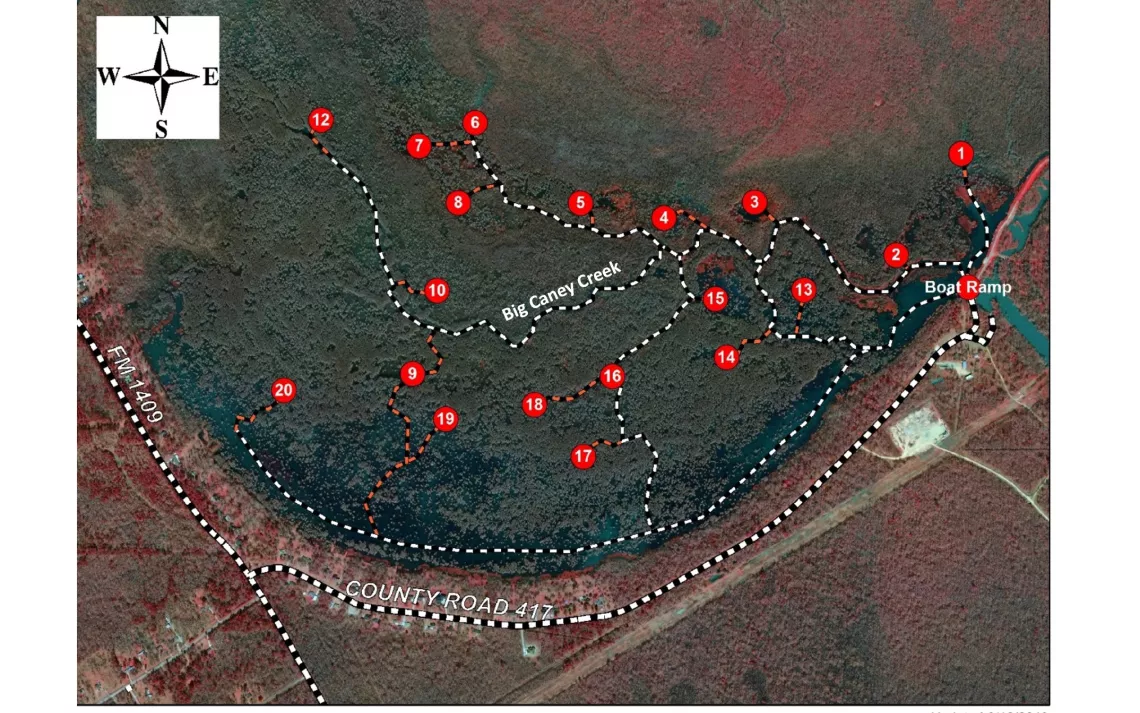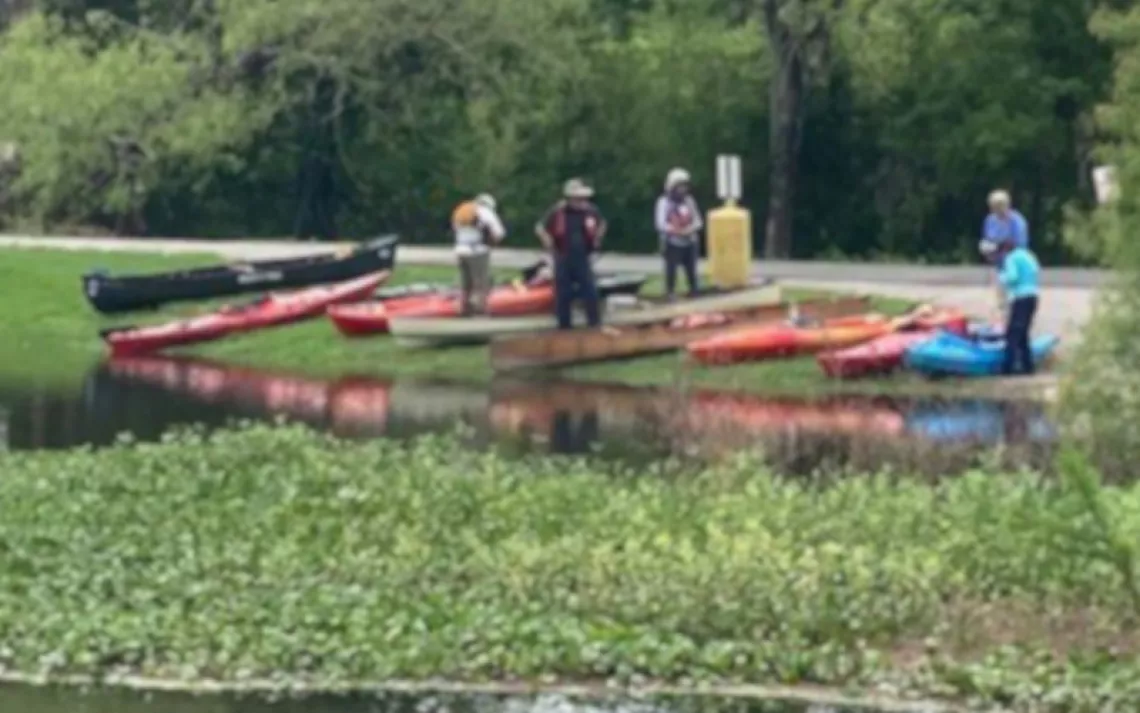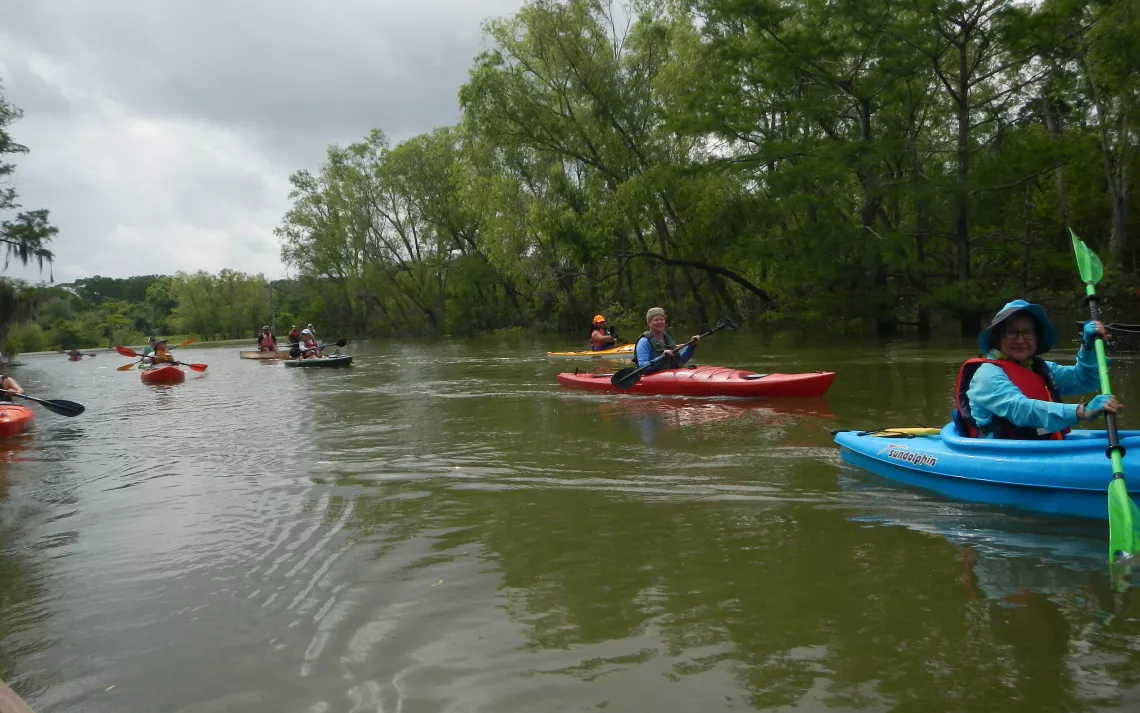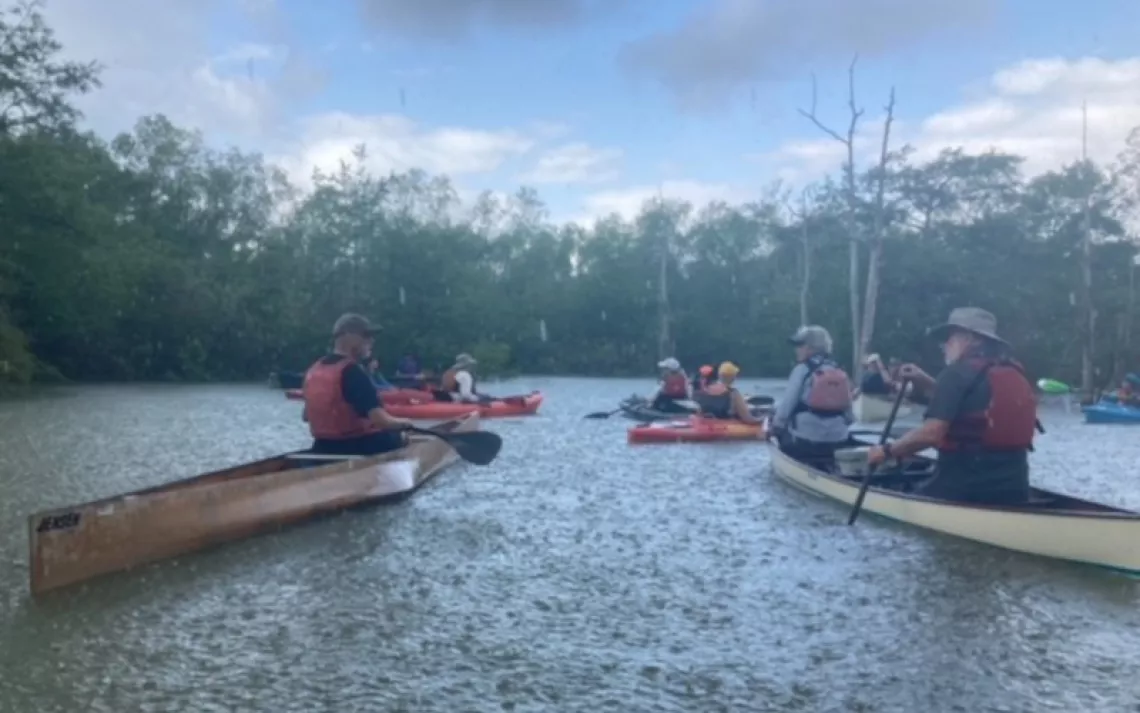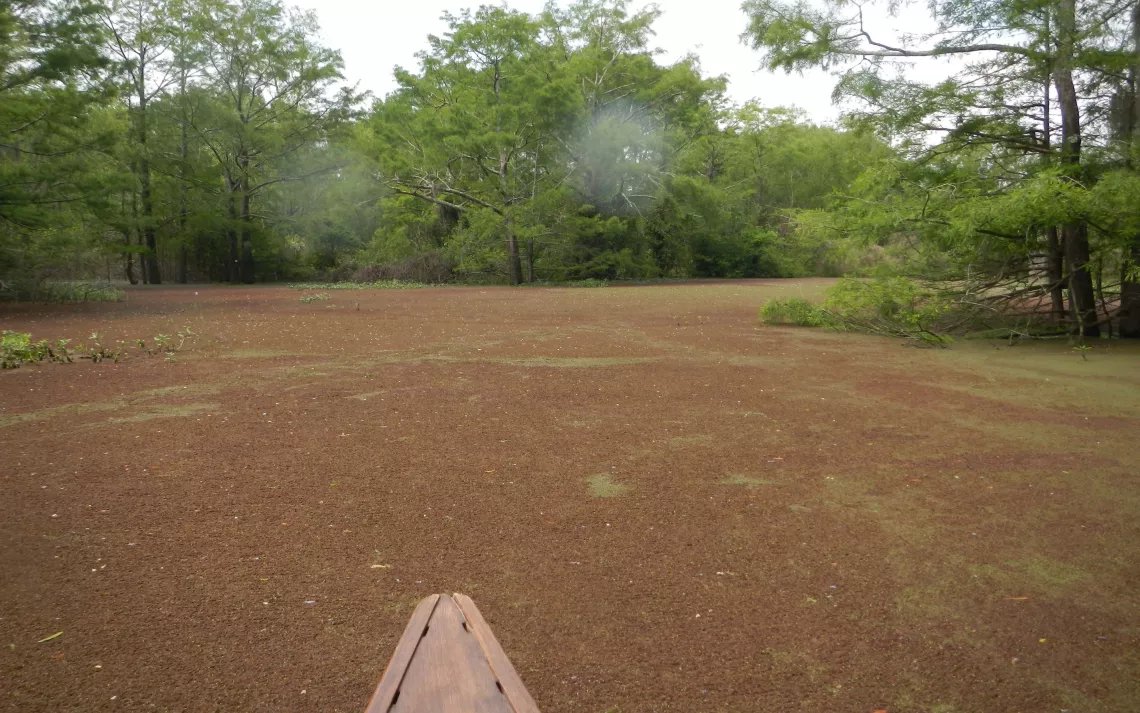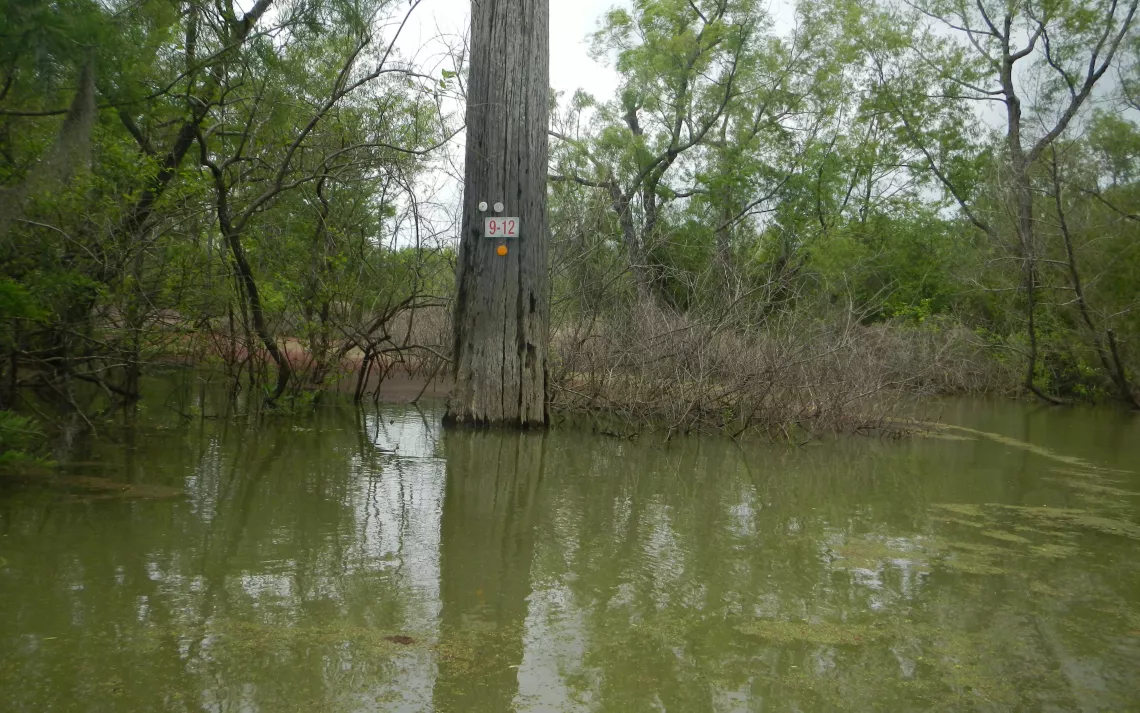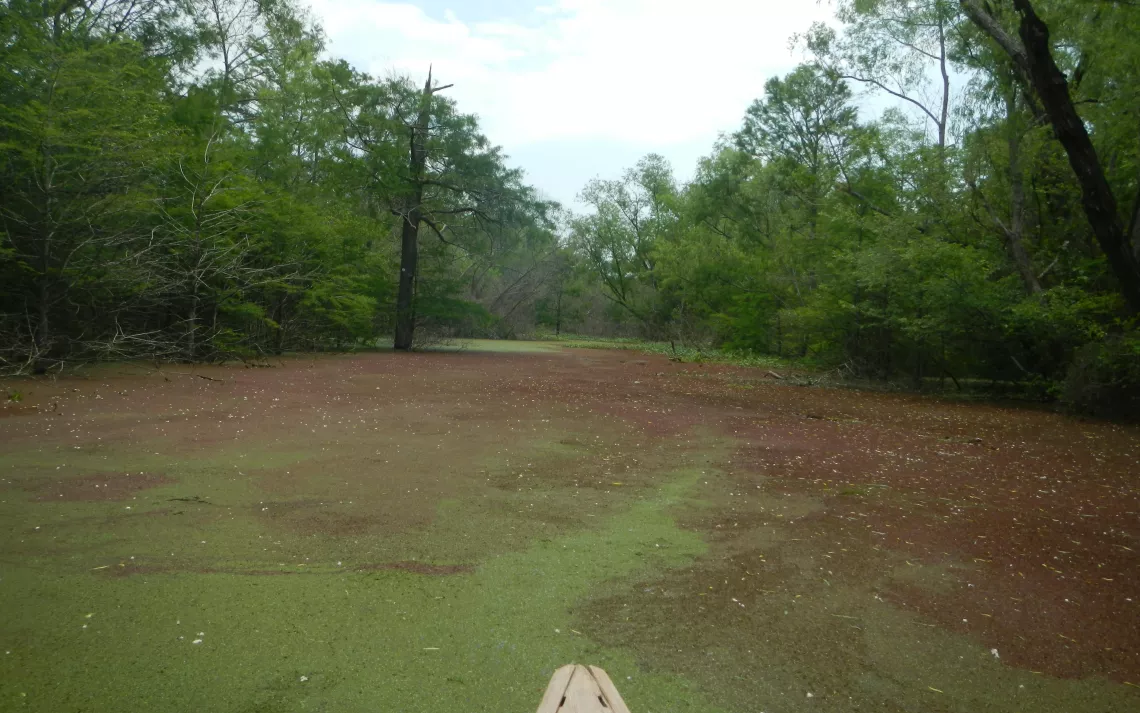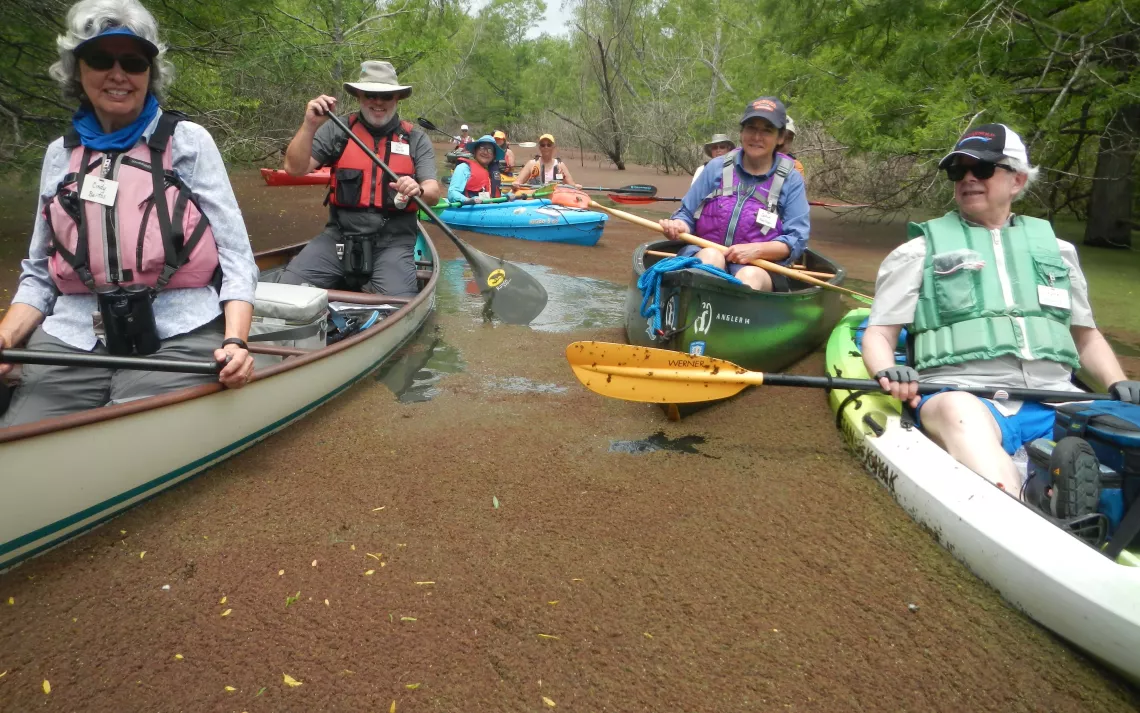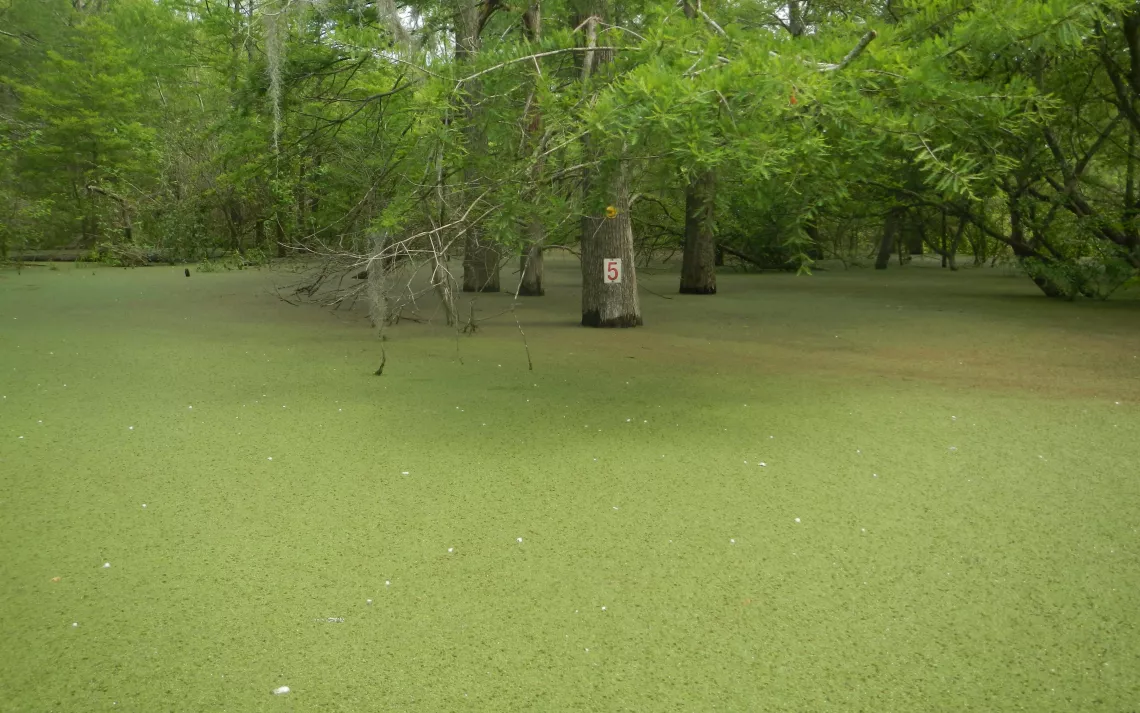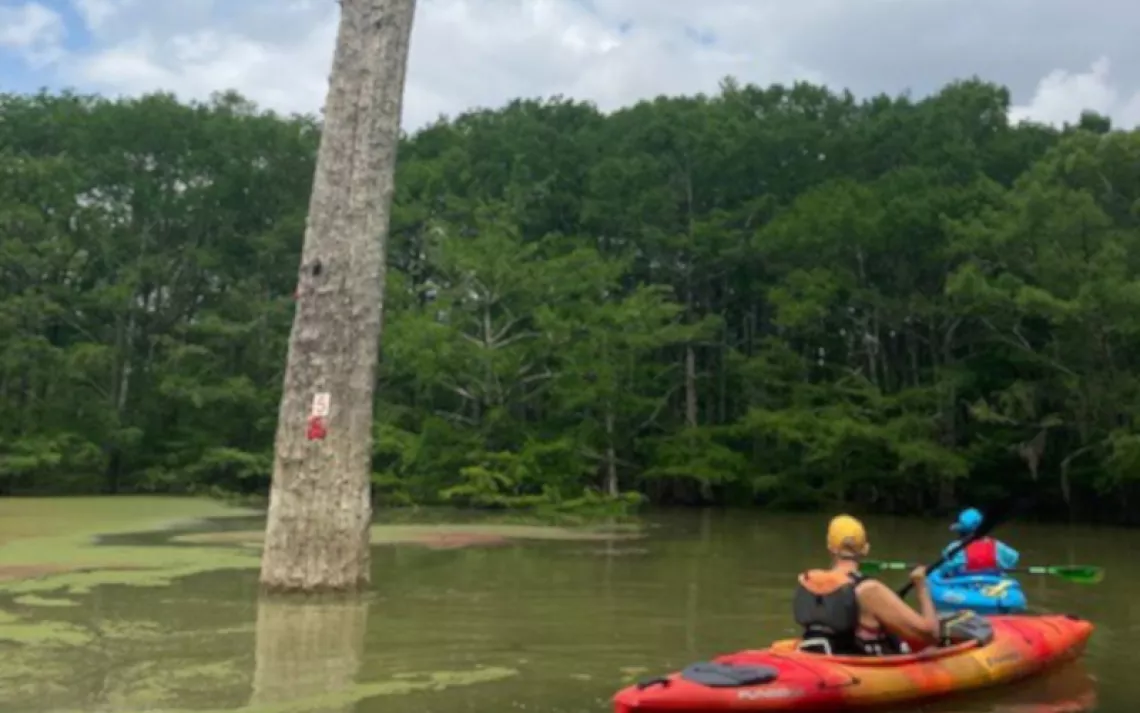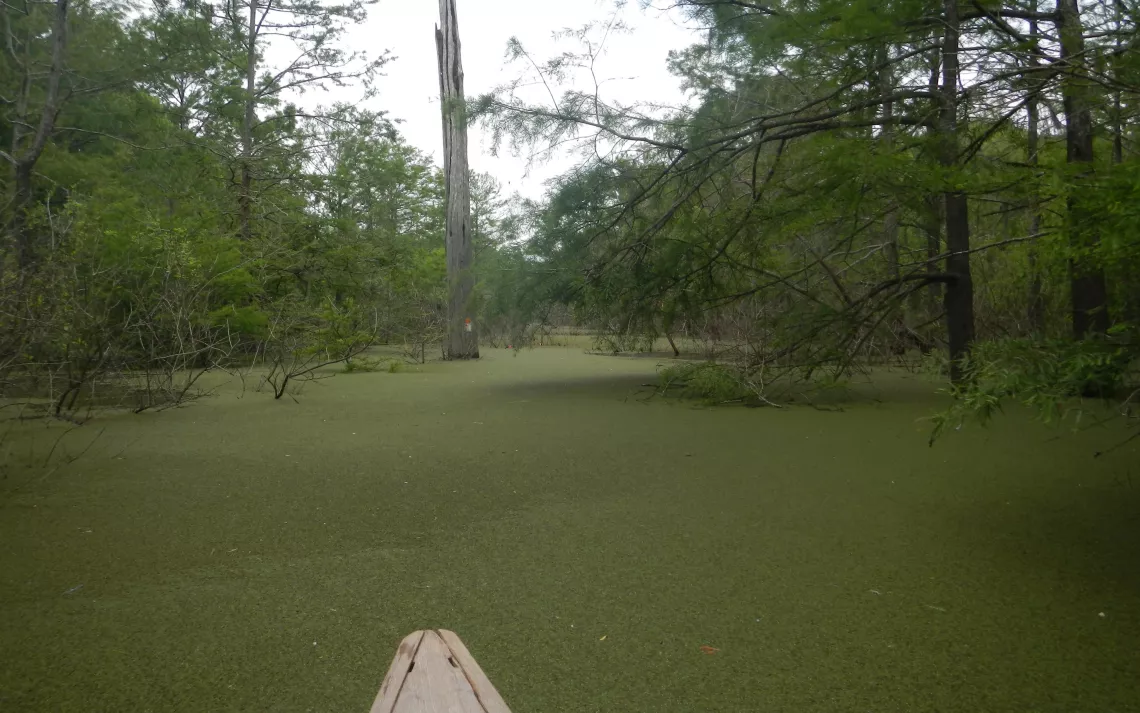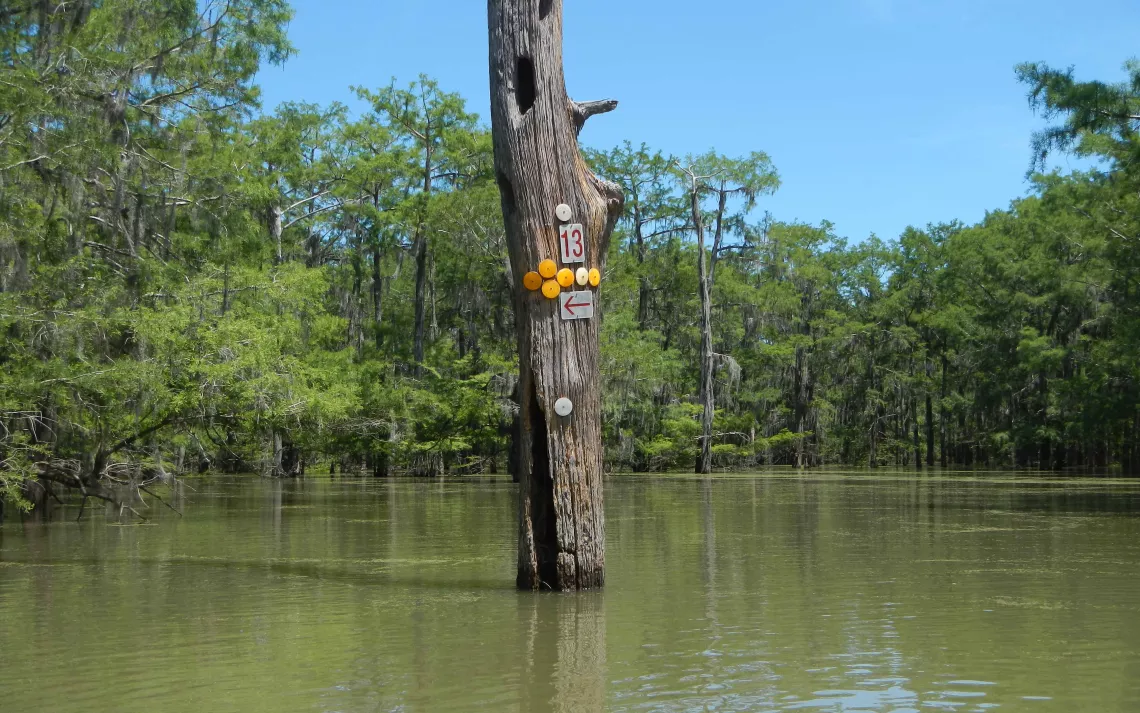By Tom Douglas
This was originally scheduled as our “Mother’s Day at Lake Charlotte” paddle, but more than a week ahead we could see that there was a good chance of having strong winds from the south, which would cause rough conditions at Lake Charlotte. When that forecast continued to hold right on up through Friday, we moved the venue for Sunday’s trip to Champion Lake, which would still offer a great cypress swamp experience, but with much more protection from a south wind.
We knew from Friday's scouting report that the water level would be quite high, which would give us easy access to most of the lake. Indeed, it was at 10.92 feet on the gauge at the Trinity River National Wildlife Refuge’s fishing pier adjacent to the boat ramp, up a little from what the scouts had observed two days before. Our scouts had also told us to expect a thick mat of floating azolla fern plants. Rains farther upstream in the Trinity River watershed had caused the river to rise, but not enough to reach flood stage at the Liberty gauge, which would generally trigger closure of the Champion Lake Public Use Area. Just enough water was entering the lake from the north to push that mat of azolla fern slowly to the south and east toward the spillway in the Champion Lake levee.
For each year’s waterfowl hunting season, the Trinity River National Wildlife Refuge conducts a drawing for hunters to obtain permits to hunt within specific, numbered clearings in the Refuge’s forested wetlands at Champion Lake. Because these clearings can serve as landmarks, I will use the Refuge’s hunting map to help describe where we went.
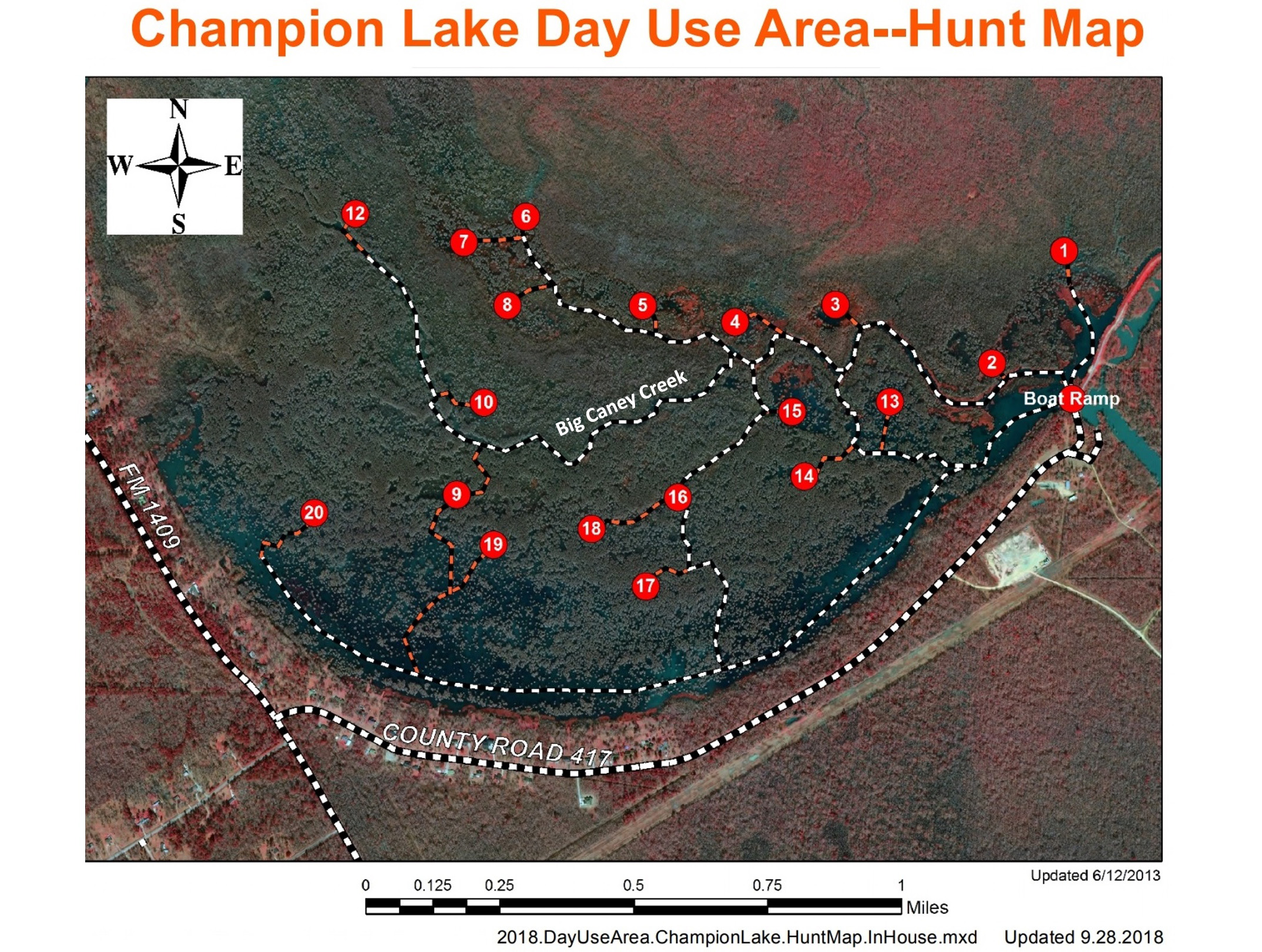
Our group, which included paddlers in 3 tandem canoes, 1 solo canoe, and 8 solo kayaks, met up at the Refuge’s boat ramp, and got underway relatively quickly for a group of 15 people. Because our scouts had alerted us to a brisk flow along the levee to the northeast of the boat ramp, we did not go in that direction. Even though the wind had not picked up much yet, we headed north to the channel of Big Caney Creek, which has a line of trees along its south side that serves as a windbreak.
To let everyone get the hang of how the directional signs along the paddling trails are set up, we followed the markers leading to Sites #3 and #4 as we headed westward up Big Caney Creek. We enjoyed a brief and gentle rain shower that wasn’t accompanied by any thunder and helped to keep the temperature pleasant.
Near the Five Finger Tree, we chose the northern branch of the paddling trail that leads on up to Site #5. Thanks to expert advance scouting advice from Joe Coker, we took the exit for Site #5 and continued on into the forest for a little ways to the west of it to a perfect lunch spot. Even though the treetops were swaying somewhat overhead, it was calm down at water level. This was just the right place for everyone to introduce themselves and to engage in some spirited conversations.
After the lunch break, we explored more along the northern paddling trail, then headed back down to Big Caney Creek for a short distance before cutting to the south along another branch of the paddling trail to Site #15. Continuing on down toward Site #16, we spied an egret in a nest up ahead of us. Being careful not to disturb the bird, we reversed course back up to Big Caney Creek and took the alternative homeward-bound paddling trail that leads by Site #13. We encountered some wind on the final, short leg to the east on the way back to the boat ramp, but it was manageable, and we weren’t exposed to it for very long.
Once that short rain shower during the morning had passed, the day turned out to be really beautiful. In addition to all of the remarkable aquatic and forest vegetation, members of the group saw or heard a number of bird species while we were on the water. Here is a listing, thanks to Cindy Bartos and Rea Inglis: Mississippi Kite, Northern Parula, Yellow-throated Warbler, Carolina Chickadee, Tufted Titmouse, Downy Woodpecker, Black-bellied Whistling Duck, Yellow-crowned Night Heron, Green Heron, Great Egret, and Prothonotary Warbler.
Since we had kept the route for the trip relatively short at 4.9 miles, we were able to reach the take-out by a few minutes before 2:00. Given the amount of poking around in the forest that we had done and the extra resistance to our forward progress that was offered by the floating mat of azolla fern in places, this seemed just about right.
